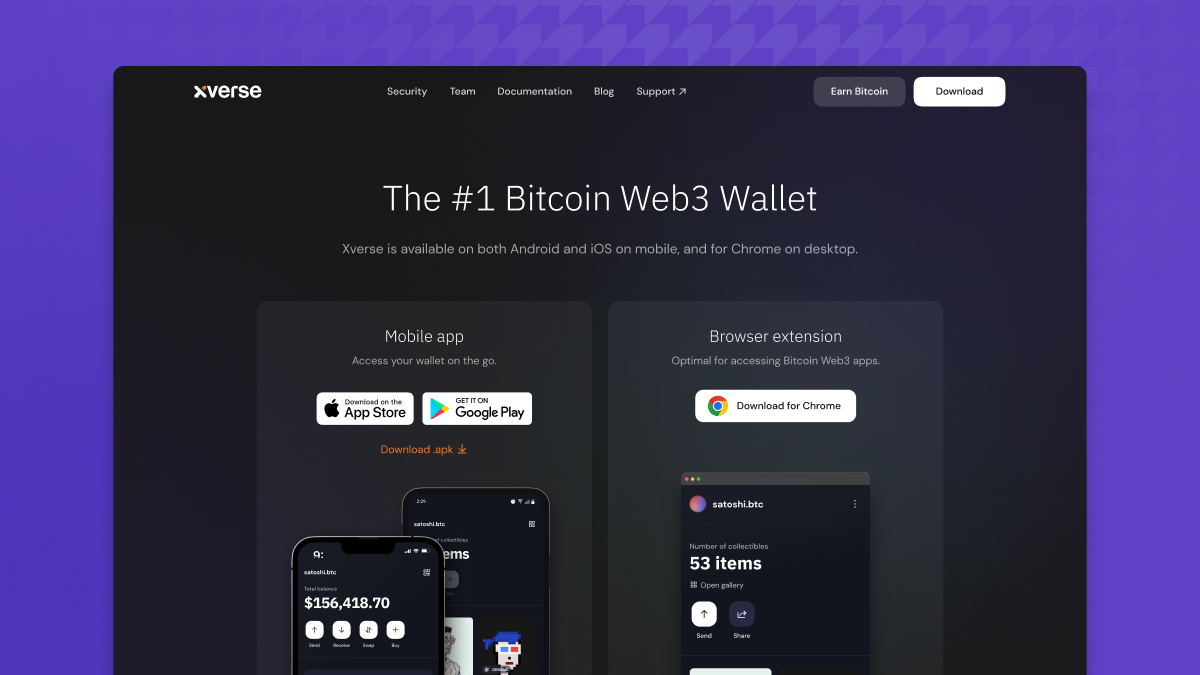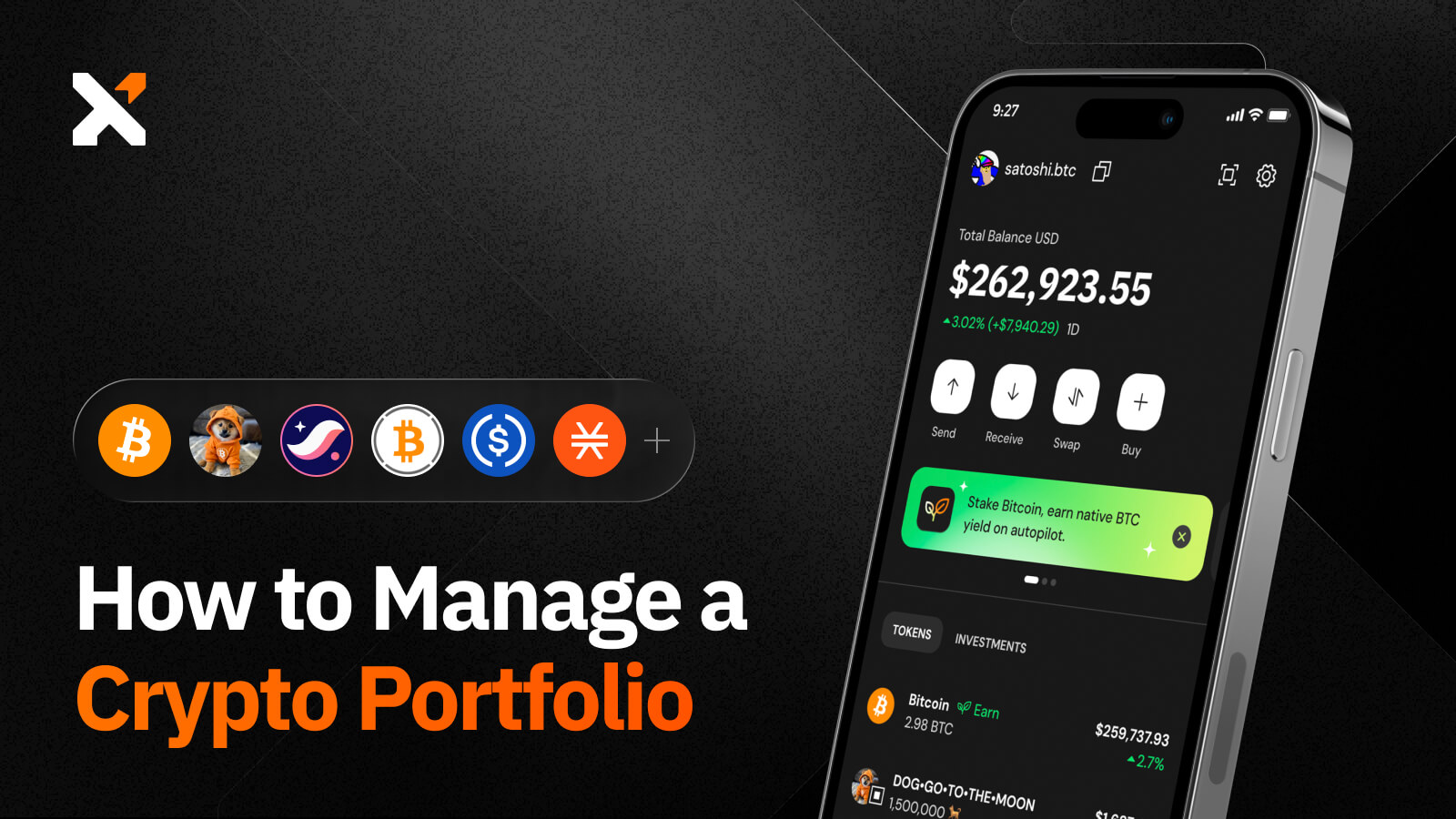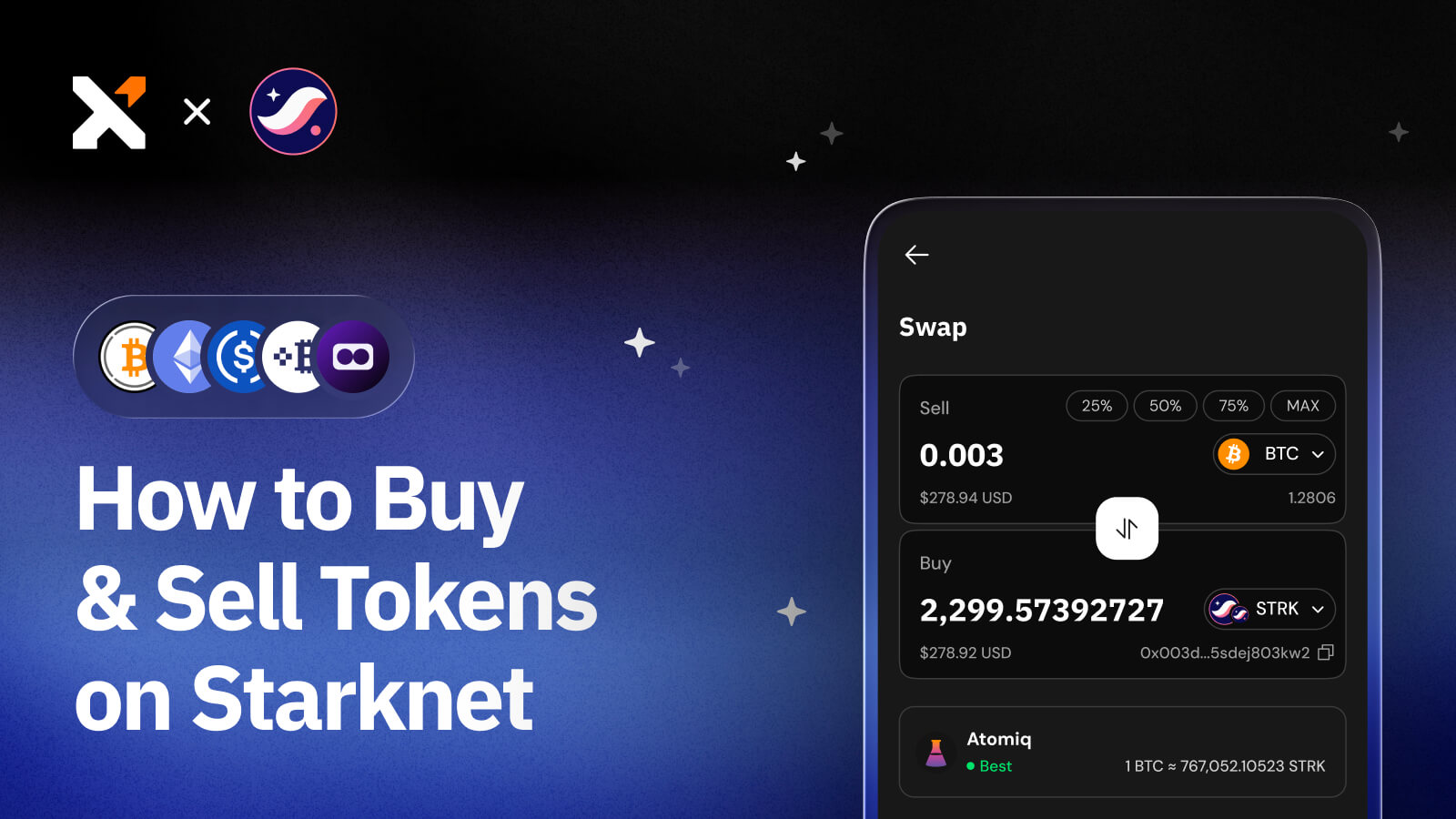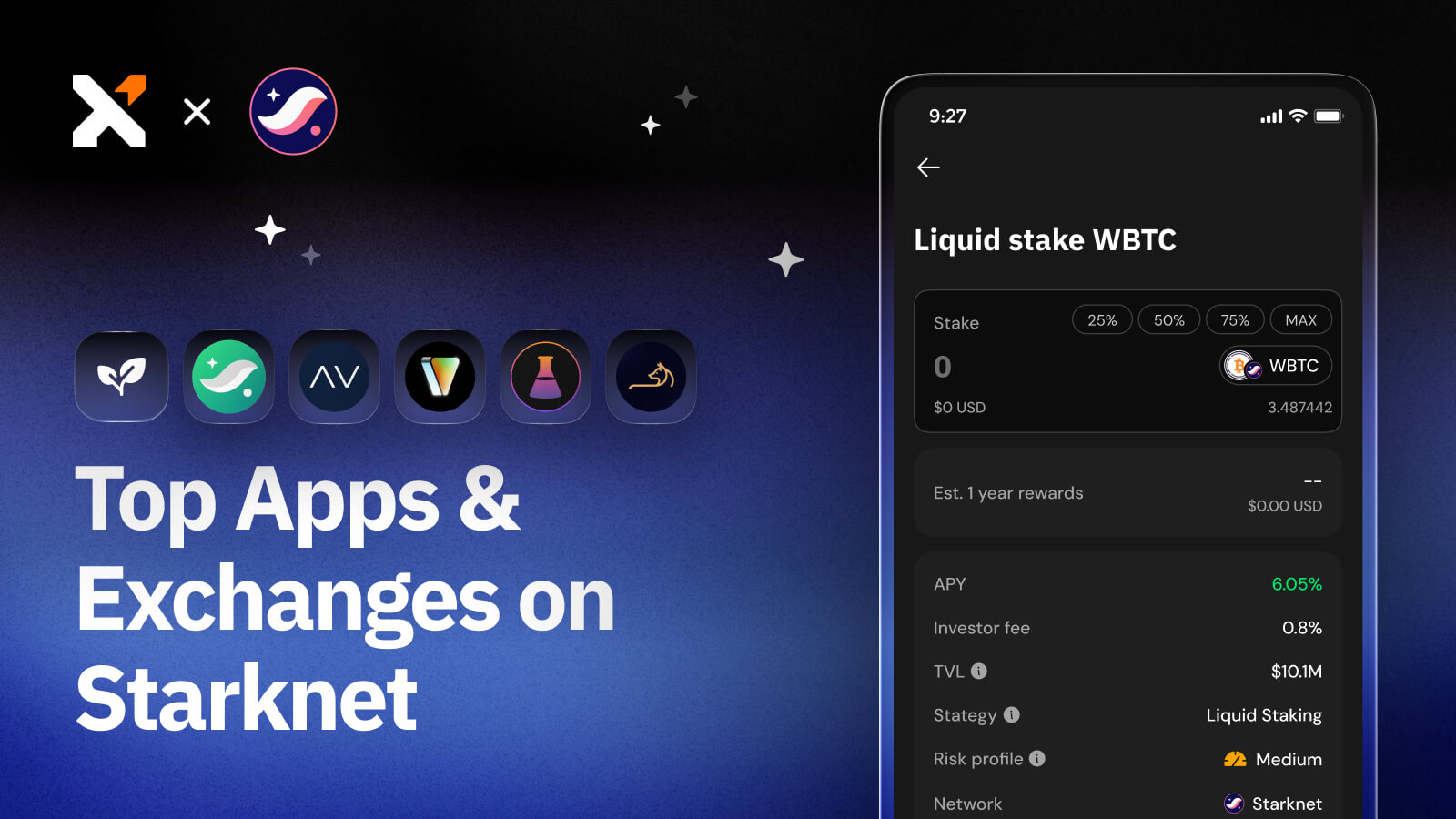What Are Ordinals? A Guide to NFT Inscriptions on Bitcoin
Bitcoin Ordinals are the latest innovation to come out of the Bitcoin ecosystem, enabling anyone to inscribe various kinds of data onto the Bitcoin blockchain. This has led to the emergence of a new market for on-chain Bitcoin NFTs.

Sign up for updates!
Stay tuned to our latest news and updates
.svg)
Bitcoin Ordinals are the latest innovation to come out of the Bitcoin ecosystem, enabling anyone to inscribe various kinds of data onto the Bitcoin blockchain. This has led to the emergence of a new market for on-chain Bitcoin NFTs.
Read on to learn what Ordinals are, how Ordinal inscriptions work, and how you can inscribe your own Bitcoin Ordinals. You will also discover a list of the most popular Ordinal NFT projects in the market.
What Are Ordinals?
Ordinals are numbers given to Satoshis (sats), the smallest bitcoin units that can be recorded on the blockchain. Each sat represents a 100 millionth of a Bitcoin.
Ordinals assign numbers to sats in the order in which they’re mined and “transferred from transaction inputs to transaction outputs in first-in-first-out order.” This sats numbering scheme permits the tracking and transferring of individual sats.
With the ability to inscribe data onto individual sats, Ordinals enable the creation of verifiably unique digital assets, commonly referred to as NFTs, directly on the Bitcoin blockchain without making any new changes to the protocol.
To gain a better understanding of Ordinals, let’s take a look at Ordinal Theory and how inscriptions work.
What is Ordinal Theory?
Created by Software engineer Casey Rodarmor, Ordinal Theory is a proposed methodology for individually identifying and tracking individual sats throughout Bitcoin’s outstanding supply and inscribing them with data.
According to the Ordinal Theory, each sat is serially numbered using ordinal numbers, starting from 0. This numbering system enables the easy tracking of satoshis from the moment they are mined and throughout the entire transaction lifespan.
Ordinal Theory, as the name suggests, is simply a theoretical concept. That means satoshis aren’t actually serialized at the protocol level, and there’s no on-chain footprint.
Rodarmor proposed the scheme for giving sats serial numbers to provide Bitcoin with stable identifiers that could be used by various Bitcoin applications, such as Bitcoin NFTs.
That is where inscriptions come into play.
What Are Ordinal Inscriptions & How Do They Work?
Ordinal inscriptions are digital artifacts native to the Bitcoin blockchain that are created by inscribing sats with content.
The content could be text, images, or videos, for example. Images and text are currently the most common type of content inscribed to sats.
Digital Artifacts vs. NFTs
Rodarmor prefers the word digital artifacts to NFTs because he doesn’t believe they’re the same. In a blog post, he writes: “Digital artifacts are NFTs, but not all NFTs are digital artifacts.”
An NFT can only be considered a digital artifact if it’s on-chain, decentralized, unrestricted, and immutable. Most NFTs in the market today store their data off-chain or on centralized chains, exposing it to loss or unauthorized access through back-door admin keys.
For instance, most Ethereum NFTs contain a link pointing to a digital file hosted by a cloud storage service provider like IPFS. On the other hand, Ordinals inscriptions are recorded on-chain on the most secure and decentralized blockchain in the world.
Keep in mind that while Rodarmor prefers the term digital artifacts, it hasn’t caught on. People are referring to Bitcoin inscriptions as NFTs, which is the more popular and easily recognizable term. Still, the word digital artifacts may gain popularity since Bitcoin Ordinals NFTs really are different from most conventional NFTs.
Content Storage
When inscribing satoshis, content is stored in the witness portion of a transaction. The 2017 Segregated Witness upgrade introduced the witness portion of a Bitcoin transaction. This upgrade increased transaction data efficiency by splitting the Bitcoin transaction data structure into two parts: transaction and witness.
The transaction portion contains transaction data like sender, receiver, input, and output, while the witness section holds signatures and other types of data that prove that a transaction has been authorized.
Furthermore, the 2021 Taproot upgrade, which removed data constraints, enables inscriptions that are almost 4 MBs in size.
Ordinals have leveraged these two upgrades. As a result, Taproot utilization has significantly increased past the 5% mark since the launch of digital artifacts.
Ordinal Inscriptions
Once mined, inscriptions are made on the first satoshi of the first output of a transaction, permanently making this inscribed sat different from other satoshis.
Using Ordinal theory, someone can easily find the unspent output holding the inscribed sat. People can also track the movement and ownership of the inscribed sat over time, as well as buy and sell it. Inscriptions can be transferred to normal Bitcoin addresses, and they can benefit from other Bitcoin infrastructures, such as multi-signatures.
Ordinal inscriptions use the Bitcoin unspent transaction output (UTXO) set. Therefore, the adoption of Ordinals will boost the demand for outputs and expand the size of the UTXO set.
Moreover, inscription alters the perceived value of individual sats by giving them a form of rarity. For example, Bitcoin’s periodic events, such as halvings, can affect the rarity of inscribed sats.
What Are Rare and Uncommon Sats?
The most revered types of sats are those categorized as ‘rare’ and ‘uncommon’ in the Ordinal inscriptions rarity scale.
Rare and uncommon satoshis have become collector's items and are typically sold at higher prices than ordinary sats. The Bitcoin blockchain categorizes these sats according to when they were created during the main periodic events occurring on Bitcoin. These events include creating new blocks, difficulty adjustments, halvings, and cycles.
Rare sats are the first sats mined at the start of difficulty adjustment periods. These periods occur after approximately two weeks when 2016 blocks are mined on the Bitcoin blockchain. There is a total supply of 3,437 rare sats that will ever be available in the Bitcoin ecosystem.
Rare sats are identified by looking at a sat’s degree notation, as shown below.

Uncommon sats are the first sats mined at the beginning of every block.
Blocks on Bitcoin are mined approximately every ten minutes, making the number of uncommon sats higher than rare sats. A total supply of 745,855 uncommon Satoshis will ever be available. Below is how you can identify an uncommon Satoshi according to its degree notation.

Rare and uncommon Satoshis are hard to come by. However, individuals and groups of people called ‘Sat Hunters’ specialize in finding such sats.
What Are .Sats Names?
.Sat Names is a new standard on the Bitcoin network that allows people to create human-readable names using ordinal inscriptions. Names created using the .sats standard will have a .sat attached to the end. For instance, names could appear as xverse.sat, ken.sat, elizabeth.sat, and so on.
The .sats standard follows three main principles.
- All name states are created and recorded on Bitcoin. This means no additional databases or services outside the blockchain are required to create the names, and any Bitcoin node can successfully create .sats names.
- The standard is created to remain neutral, ensuring no gatekeepers or users have the privilege and access to create .sat names.
- The first person to register a .sats name is the owner of that name and has the right to update the name.
The .sats name standard is not new to the Bitcoin network since people were already inscribing .ord and .btc names. Still, the standard became the first JSON protocol on Bitcoin and was called 'The Sats Names System' by its developers.
JSON (JavaScript Object Notation) is a data format used in programming that is easy to read by both humans and machines. Software systems use it to represent objects with complex data structures in a simple and readable way.
For example, in the .sats name standard, user wallets, which usually have a long string of complex letters and numbers, can be represented by a name instead. A Bitcoin wallet address owned by Alice can be represented using the name 'alice.sat'. This could make it easier for people to recognize a wallet belonging to an individual or an institution. It could also potentially reduce the number of lost bitcoin sent to the wrong addresses, among other applications.
What Are Recursive Inscriptions?
Recursive inscriptions are an update to the Ordinals protocol that allows inscriptions to retrieve data from other inscriptions on the Bitcoin network using a special syntax code.
The protocol’s core team shared this update on June 10, 2023, and seeks to help reduce some barriers in how Ordinals have been functioning. One of the barriers targeted through recursive inscriptions is Bitcoin’s 4 MB size limitation, which restricts the size of NFTs created on the network.
For example, Bitcoin NFT creators can simultaneously create thousands of generative art pieces for a collection using recursive inscriptions instead of inscribing each NFT with the required traits. NFTs in the collection created through recursive inscriptions will only need to automatically request data on the generative art pieces' unique traits from other inscriptions on the network. This would save up on the space each NFT’s code uses on the blockchain and reduce the transaction fees associated with creating individual NFTs in the collection.
Besides their use in art creation, recursive inscriptions bring more possibilities to the Bitcoin blockchain. Some of these possibilities include creating 3D video games whose codes can be stored in different inscriptions on the blockchain, building on-chain applications, and possibly an Internet built on Bitcoin.
What Are Cursed Ordinal Inscriptions?
Cursed Ordinal inscriptions are invalid or unrecognized inscriptions by Ord because they were created using the wrong opcodes. These codes program different operations on the Bitcoin blockchain.
While the Ordinal theory has already brought a lot of possibilities to the Bitcoin network, it has also faced some challenges. One of these challenges is cursed Ordinal inscriptions.
When an inscription becomes ‘cursed,’ it is automatically assigned negative inscription numbers. On the other hand, positive inscription numbers are usually assigned to a valid Ordinal inscription. There are several ways in which users create cursed inscriptions on Bitcoin. These include; having multiple inscriptions per transaction, inscriptions with unrecognized even headers, inscriptions on the same sat, and more.
Since cursed Ordinal inscriptions are a new challenge presented to the Ordinals maintenance team, they are currently working on solutions to turn them into ‘blessed inscriptions.’ However, many ordinal wallets, including Xverse, don’t accept transactions with cursed inscriptions. Therefore cursed inscriptions would be risky to hold at present.
Where Can You Buy Ordinals NFTs?
You can purchase Bitcoin Ordinals over the counter or on Bitcoin NFT marketplaces. The trustless marketplaces Gamma and Magic Eden were the first to enable you to seamlessly buy and sell Bitcoin Ordinals NFTs.
Xverse has enabled Partially Signed Bitcoin Transactions (PSBTs) in all transactions on the two marketplaces. Here, you can be assured of secure interactions since PSTBs allow you to review transaction details using a human-readable interface.
You don’t have to understand complex code or take part in blind signing to participate in the marketplaces. All you need is the Xverse app. Since both marketplaces are trustless, no intermediary or centralized entity is required to complete a transaction. Thus, there is an extra layer of security and decentralization for all your transactions.
How to Buy Bitcoin Ordinals on an NFT Marketplace
In addition to over-the-counter, you can buy and sell Ordinals on various NFT Marketplaces, including Gamma, Magic Eden, and Ordswap. Here’s how to buy a Bitcoin Ordinal on Gamma using the Xverse Wallet Chrome Extension.
First, download Xverse, available on iOS, Android or Chrome browser extension..

Next, head to gamma.io, which will ask you to connect your wallet. Choose ‘Xverse’ as your preferred wallet option.
Log into your existing account by clicking on ‘restore wallet’ and entering your wallet’s seed phrase. If you don’t have a wallet, you will click on ‘create wallet’ and follow the steps to help you create one.

After you’ve connected your wallet, you can either check out the Bitcoin Ordinals on the marketplace or search for a specific collection. In this case, we’ll use the ‘Bitcoin Whales Club’ collection as an example.

Next, choose the Bitcoin ordinal, in this case, a Bitcoin Whale you want to buy, and confirm your wallet address on the prompt that appears.

Approve your payment and, lastly, your transaction by clicking on the ‘Complete purchase’ button that appears.

Once the transaction is settled on the Bitcoin blockchain, you can find your Bitcoin Ordinal in the ‘Collectibles’ section of your Xverse app and extension.
Popular Bitcoin Ordinals NFT Collections

Now, let’s take a look at some of the most popular Ordinals collections that have merged in this fast-growing new Bitcoin NFT market.
Ordinal Punks
Ordinal Punks is a collection of 100 profile picture NFTs minted within the first 650 inscriptions. The collection pays tribute to the famous CryptoPunks NFTs. Based on the project’s sales data, the average price of these NFTs was $71,860 shortly after they launched (February 23, 2023).
Taproot Wizards
Taproot Wizards is a collection of 2,099 JPEG NFTs. The concept behind this project is to “reignite the spark that made Bitcoin magical.” According to the creator, people have forgotten the magic of Bitcoin, which was felt widely during the early days. Developer Udi Wertheimer is the man behind this Ordinals NFT collection.
The first Taproot Wizard in this collection made history when it was recorded in the largest Bitcoin block ever. The JPEG almost filled a whole 4 MB block.
OnChain Monkey
OnChain Monkey is the first 10k collection that has been inscribed on Bitcoin.
The PFP NFT collection was created by a team of blockchain builders who initially minted the collection on Ethereum in 2021 in a single on-chain transaction before making their debut on Bitcoin in the form of Ordinal Inscriptions in 2023.
Owning a Genesis OnChain Monkey NFT gives holders access to future drops and rewards as the team continues to build its community, called the Wealthy Digital Nation.
The Dan Files
The Dan Files is an Ordinals collection that features different forms of art created by a person called - you guessed it - Dan. He describes his work as an index of early Ordinal collections he created for fortune and glory.
Dan’s inscriptions range from Ordinal 626 to 950 and are currently on sale. Some of the notable inscriptions in this collection include a version of the Lord’s prayer that pays homage to Satoshi, an audio of Dan talking about his collection and what it means to him, and even a funny dancing baby.
Twelve Fold
The Twelve Fold Ordinals collection was created by Yuga Labs, one of the biggest players in the NFT market, who created the famous Bored Ape Yacht Club (BAYC) collection on Ethereum.
TwelveFold is a limited edition collection composed of 300 generative art NFTs based on a 12 by 12 grid, inscribed onto satoshis on the Bitcoin blockchain. All inscriptions were made on Satoshis with a satpoint ending with the number 12, making them all unique, easily identifiable, and rare.
Yuga Labs has created TwelveFold exclusively as an art collection without any utility or relation to its Ethereum-based projects. The Twelve Fold auction generated $16.5 million in sales, making it one of the most expensive Bitcoin Ordinals collections to date.
Bitcoin Rocks
Bitcoin Rocks is a collection of 100 rocks in different colors that pays tribute to an Ethereum-based 2017 NFT collection called EtherRock. The person behind this collection goes by the pseudonym Rocktoshi. This Ordinals NFT collection holds auctions from time to time, allowing people to buy the various rocks.
The highest sale to date was 9.86 BTC, according to the project’s Google sheet. This is over $200,000 based on the BTC price at the time of writing.
Inscribed Pepes
Inscribed Pepes is a collection of 69 unique characters inspired by the Pepe the Frog meme. They were minted within the first 2,500 inscriptions. The highest sale as of this writing was 1.5 BTC ($37,079.75). On the Inscribed Pepe’s Discord server, the project has four team members.
Timechain Collectibles
Timechain Collectibles are 21 original works of art depicting timepieces. The art was AI-generated and inspired by a 2021 treatise by software engineer Gigi that says, “Bitcoin is time.” Moreover, the timepieces have interesting stories behind them, which can be found on the project’s Discord server.
Drawing information from the “confirmed sales” channel on the project’s server, the highest sale so far was 4 BTC. This cost was about $95,000 based on the bitcoin price at the time of writing.
How to Create & Inscribe Bitcoin Ordinals Using Xverse
Running a node to inscribe an Ordinals NFT isn’t for everyone. Fortunately, the Gamma NFT marketplace has introduced inscription, allowing anyone to inscribe Bitcoin Ordinals in a few easy steps using Xverse. Alternatively, you can also inscribe Bitcoin Ordinals using the Xverse mobile wallet on Gamma and a platform called ordinalsbot.
Follow these steps to learn how to inscribe your first Ordinal NFT:
Download Xverse Bitcoin wallet. Xverse is suitable because it provides a Taproot Bitcoin receiving address, which you’ll need to get your Ordinals NFT.

Load your wallet with Bitcoin to pay network fees. Open Gamma or OrdinalsBot in your browser and connect your Xverse wallet. Click the “Ordinals” tab at the top of the website.

Select “New Inscription.”

Pick the content type you wish to inscribe and upload it. The accepted file types are WEBP, JPEG, GIF, PNG, and SVG. Still images and GIFs should be under 60 KB and 200 KB, respectively.

Click “Continue.” Choose a transaction fee. The displayed fees include Gamma’s service fee and Bitcoin network charges earned by miners.

Click “Continue.” Enter your Ordinal recipient address. You can find this address by going to the NFT section in Xverse. Click “Receive.”

Copy the Ordinals address and paste it on Gamma. Do not insert a Bitcoin wallet address that doesn’t support Ordinals NFTs.

Pay for the inscription and wait for your Ordinals NFT. Depending on the amount of fees that you pay, the inscription may take hours or days.
Bitcoin Ordinals are arguably one of the most exciting developments we’ve seen in Bitcoin. To take part in this exciting new market, download Xverse to securely store and inscribe Bitcoin Ordinals today.
FAQs
ow are Ordinals different from Layer-2 Bitcoin NFTs?
Ordinals are native to the Bitcoin blockchain, while layer-2 Bitcoin NFTs are minted on layer-2 chains. For example, Stacks has become a popular second-layer protocol with a thriving Bitcoin NFT market.
How are Bitcoin Ordinals different from Ethereum NFTs?
Bitcoin Ordinal inscriptions store their metadata directly on the Bitcoin blockchain, making Bitcoin NFTs immutable, on-chain assets. Conversely, Ethereum-based NFTs don’t actually store the tokenized item or asset on-chain. Instead, they only record a link pointing to the NFT’s content on an off-chain cloud storage solution like IPFS.
How many Ordinal Inscriptions are there?
Currently, there are over 160,000 Ordinal inscriptions. Specifically, at the time of writing, the most recent inscription was numbered 166,246. Given the impressive growth Bitcoin Ordinals are experiencing, we can expect to see millions of inscriptions on the Bitcoin blockchains in a few months.
Are Bitcoin Ordinals safe?
Yes. Bitcoin Ordinals are recorded on the Bitcoin blockchain. Therefore, the chain’s robust security keeps them safe, and they cannot be altered. In fact, since Bitcoin is the most decentralized blockchain network and Ordinals are inscribed directly on-chain, Ordinal inscriptions are arguably the most secure type of NFTs in the market.
Every Ordinal on the Bitcoin protocol contains data, and with Xverse, the fee is taken from the Bitcoin wallet address rather than the Ordinal itself. Be sure that you have sufficient funds in your Bitcoin address to cover the transaction fees, as these fees are deducted directly from your address by Xverse and paid to the miners. You cannot spend the satoshis attached to the Ordinal itself.
Are Bitcoin Ordinals a good investment?
Whether Bitcoin Ordinals are a good investment will vary from investor to investor and from project to project. Going by sales activity, however, the secondary OTC market is attracting sales worth hundreds of thousands of dollars. So, this could indicate that certain people believe Bitcoin Ordinals are a good investment.
Share this article



.svg)




